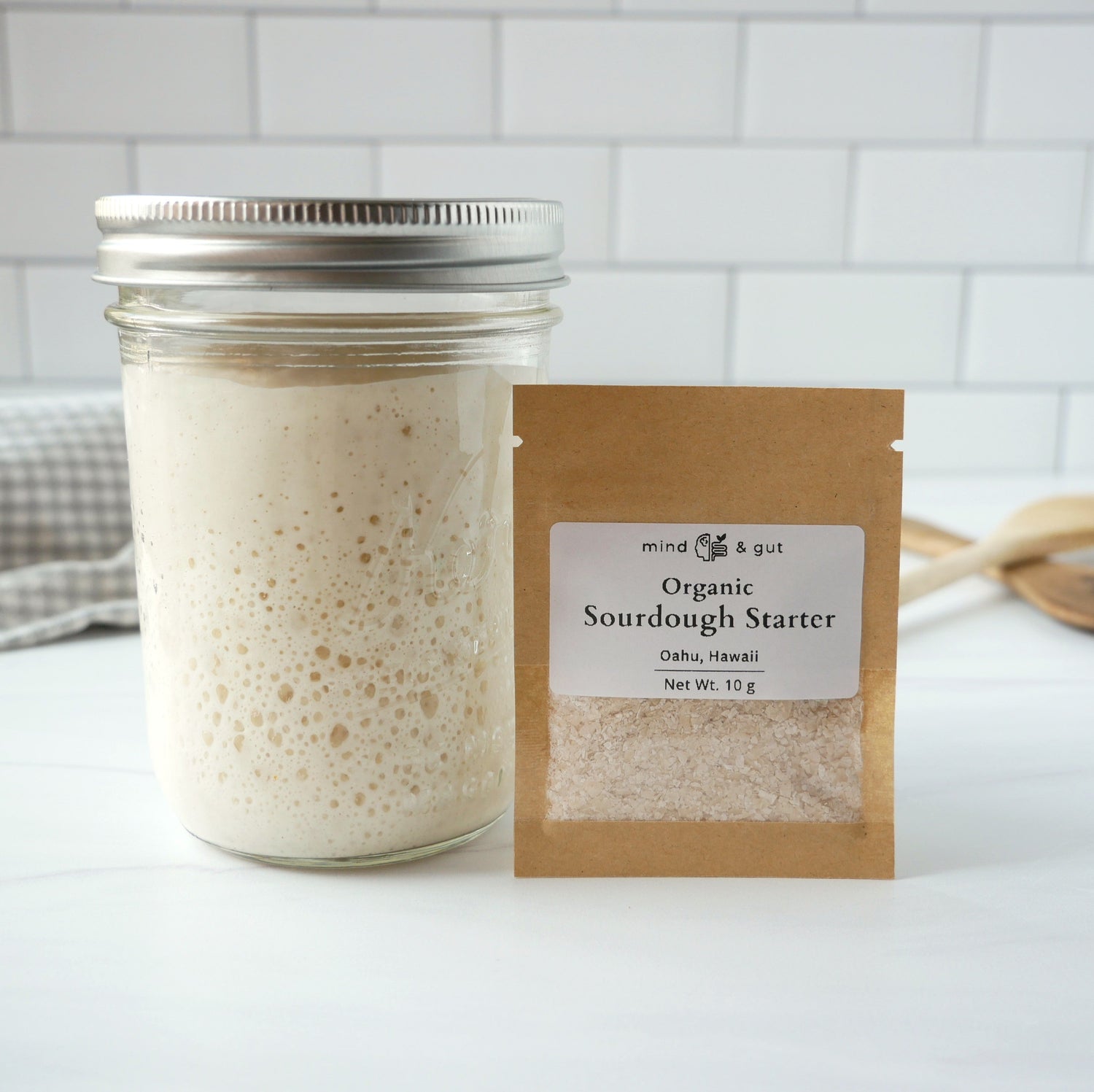How to Rehydrate a Dehydrated Sourdough Starter
Tips before you get started:
- Use lukewarm filtered or spring water. Avoid cold or hot water.
- Use unbleached, unenriched, organic flour for the best health benefits. (This is optional.) Good quality flour brands: King Arthur, Bob's Red Mill, and Kirkland.
- Make sure the lid on your starter jar is not too tight. The starter will release gas, and a tightly sealed container could burst. Tighten the lid all the way shut, then turn it back half a turn. The goal is to keep bad bacteria out and prevent mold but also allow the gases to be released.
- Be patient. Starters may reactivate in as little as 3 days or as long as 1 week depending on its environment.
- If at any time throughout this process you feel that your starter has become too stiff or too thin, add a little more flour or a splash of water until the desired consistency is reached. Do so in small amounts, such as a teaspoon at a time.
- The starter is ready to use in a recipe when it's bubbling and peaks (or doubles in size) within 4-6 hours after a feeding. Note: It will fall after it rises; this is normal.

Sourdough Starter Rehydration Steps |
Sourdough Starter Rehydration Steps (with Photos):
Day 1:
Step 1 Add 10g dehydrated starter and 1.5 Tbsp filtered water and stir. Sit for 1 hour. |
Step 2 Stir again.
|
Step 3 Add 1 Tbsp flour.
|
8 hours later
Mix well and cover. Sit in a warm spot for 24 hours. |
Day 2:
Step 1 Add 2 tsp water. |
Step 2 Add 1 Tbsp flour. |
Step 3 Mix well and cover. Sit in a warm spot for 24 hours. |
8 hours later
It's bubbling! |
Day 3:
Step 1 Add 2 tsp water. |
Step 2 Add 1 Tbsp flour. |
Step 3 Mix well.
|
Step 4 Cover and sit in a warm spot for 24 hours. |
Day 4:
Step 1 Add 1/4 cup water.
|
Step 2 Add 1/3 cup flour and mix well. |
Step 3 Cover and sit in a warm spot for 24 hours.
|
4-6 hours later If your starter doubles within 4-6 hours of feeding, you can stop here and start baking with your starter!If not, continue to day 5. |
Day 5:
Step 1 Transfer starter to a larger jar. |
Step 2 Add 1/2 cup water to starter. |
Step 3 Add 1 cup flour. Mix well and cover. Sit in a warm spot.
|
4-6 hours later
|
Maintaining the starter:
- Once the starter is successfully reactivated, it can be stored at room temperature (if you bake daily) or in the refrigerator (if you bake weekly).
- For regular feedings, after the rehydration process is complete, use a scale and weigh in grams.
- Regular feedings should be ratios of 1:1:1, 1:2:2, 1:3:3, 1:5:5, 1:10:10, etc. of starter, water, and flour (depending on how much you will need for the recipe you're making).
Resources & Videos:
Mind&Gut has no affiliation to the sources linked below. They are for educational support only.
Maintaining a starter with regular feedings:
Zero-waste feeding schedule, ‘No Discard Method’:
Sourdough bread recipe step by step with stretch & folds:
Tips for improving your starter and bread:
Tips for maintaining a starter in a tropical climate:
Join a Sourdough Support Group on Facebook:








